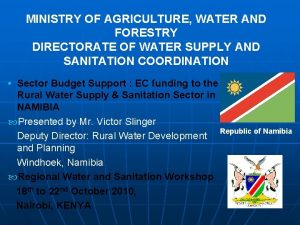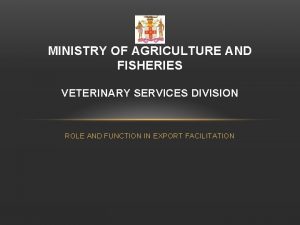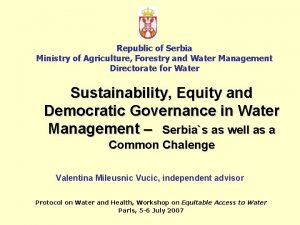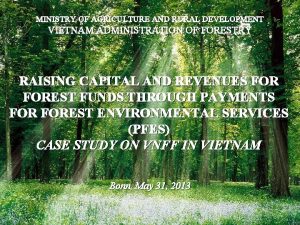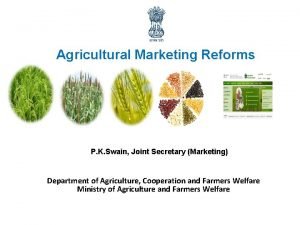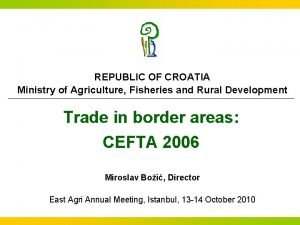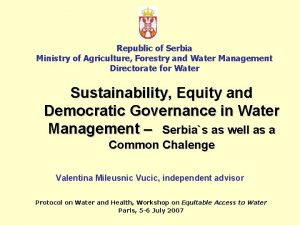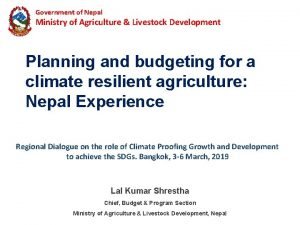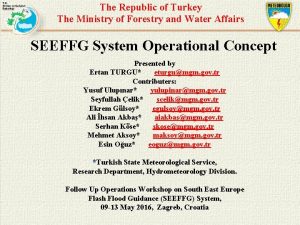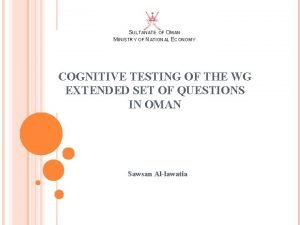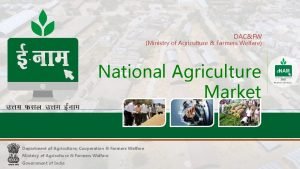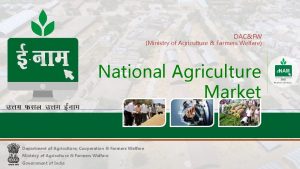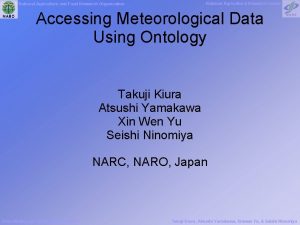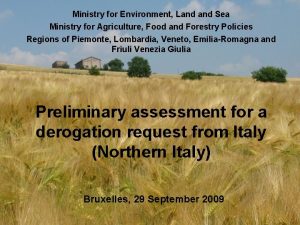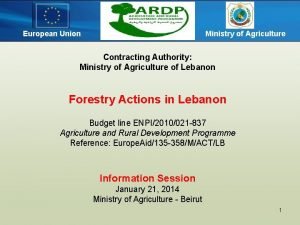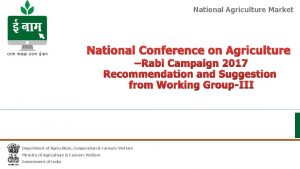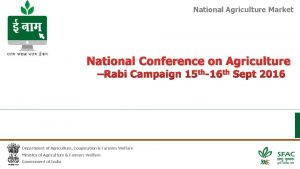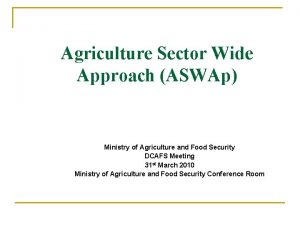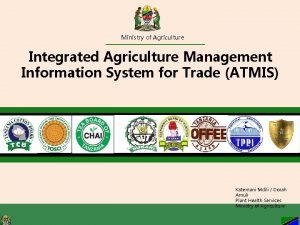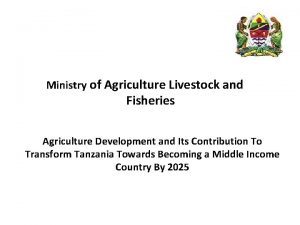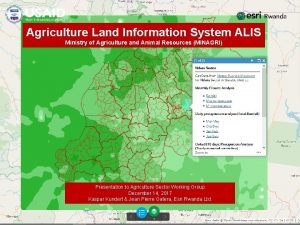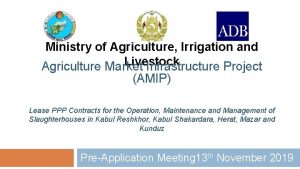Ministry of Agriculture National Research Center for Agriculture















- Slides: 15

Ministry of Agriculture National Research Center for Agriculture and Livestock Veterinary Diagnostic Laboratory -Riyadh Unit Genome Presentation about Seminar for: DNA Sequencing Presented by : Mohammed Elnour Abbo MSCs Gentetics&Molecular Biology 2014

What is DNA sequencing ? DNA sequencing is the process of determining the precise order of nucleotides within a DNA molecule. It includes any method or technology that is used to determine the order of the four bases—adenine, guanine, cytosine, and thymine On the other words the method developed by Fred Sanger forms the basis of automated "cycle" sequencing reactions today. Scaling up to sequence. In the 1980 s, two key developments allowed researchers to believe that sequencing the entire genome could be possible. The first was a technique called polymerase chain reaction (PCR) that enabled many copies of DNA sequence to be quickly and accurately produced. The second, an automated method of DNA sequencing, built upon the chemistry of PCR and the sequencing process developed by Frederick Sanger in 1977

History of DNA sequencing

History of DNA sequencing MC chapter 12

Method: 1 - first piece of chromosome taken contains millions of nucleotides this nucleotides converted into smaller pieces 2 - the pieces are used as templates for processing it produce set of fragments of different length 3 -the technique of agarose DNA gel electrophoresis used to separate fragments and keep them in order. 4 -flourscent dyes used to separate the set of fragments on the agarose and keep them in sequence.

5 -the final basis at end of each strand fragment are identified witch when combined together make the short strand witch was generated in the first step 6 -automated sequencers are used for analysis of resulting Electropherograms they show four color chromatogram in witch peak are showing and represent the four DNA bases. 7 -computers are use and all of four fragments are combined together and make long stretch analyzed for gene coding regions and other characteristics.

Basic Methods of sequencing A. Sanger dideoxy (primer extension/chain-termination) method: most popular protocol for sequencing, very adaptable, scalable to large sequencing projects B. Maxam-Gilbert chemical cleavage method: DNA is labelled and then chemically cleaved in a sequencedependent manner. This method is not easily scaled and is rather tedious C. Pyrosequencing: measuring chain extension by pyrophosphate monitoring

Maxam-Gilbert ‘chemical’ method • • Formic Acid Piperin Hydrazin Dimethyl sulphate

Sanger sequencing (Dideoxy): 1) Single stranded DNA template 2) A primer for DNA synthesis 3) DNA polymerase 4) Deoxynucleoside triphosphates and dideoxynucleotide triphosphates


10_07_1_enzym. dideoxy. jpg (B)

How to visualize DNA fragments? • Radioactivity – Radiolabeled primers (kinase with 32 P) – Radiolabelled d. NTPs (gamma 35 S or 32 P) • Fluorescence – dd. NTPs chemically synthesized to contain fluors • Analysis of sequencing products: Polyacrylamide gel electrophoresis--good resolution of fragments differing by a single d. NTP Slab gels Capillary gels

Sanger Sequencer


Interesting, right? This is just a sneak preview of the full presentation. We hope you like it! To see the rest of it, just click here to view it in full on Power. Show. com. Then, if you’d like, you can also log in to Power. Show. com to download the entire presentation for free.
 Ministry of agriculture, water and forestry directorates
Ministry of agriculture, water and forestry directorates Ministry of agriculture veterinary services division
Ministry of agriculture veterinary services division Ministry of agriculture serbia
Ministry of agriculture serbia Ministry of agriculture and rural development cameroon
Ministry of agriculture and rural development cameroon Ministry of agriculture slovenia
Ministry of agriculture slovenia Ministry of agriculture croatia
Ministry of agriculture croatia Ecotourim
Ecotourim Pk swain
Pk swain Ministry of agriculture slovenia
Ministry of agriculture slovenia Ministry of agriculture croatia
Ministry of agriculture croatia Ministry of agriculture serbia
Ministry of agriculture serbia Ministry of food agriculture and fisheries denmark
Ministry of food agriculture and fisheries denmark Ministry of agriculture and livestock development nepal
Ministry of agriculture and livestock development nepal Republic of turkey ministry of agriculture and forestry
Republic of turkey ministry of agriculture and forestry Ministry of national education morocco
Ministry of national education morocco Ministry of national economy oman
Ministry of national economy oman
